Which type to choose?
Modern wallpaper can be either traditional, paper-based, or washable, based on other materials. According to the base material, they are divided into:
- Paper;
- Vinyl;
- Acrylic;
- Fiberglass;
- Metallized;
- Liquid;
- Natural (textile, bamboo, leather and others).
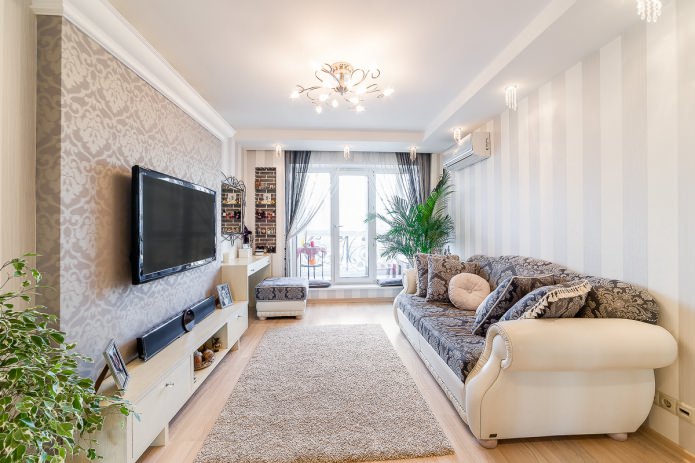
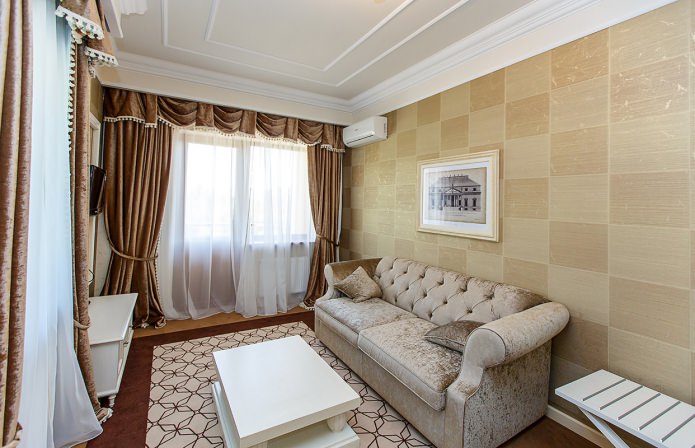
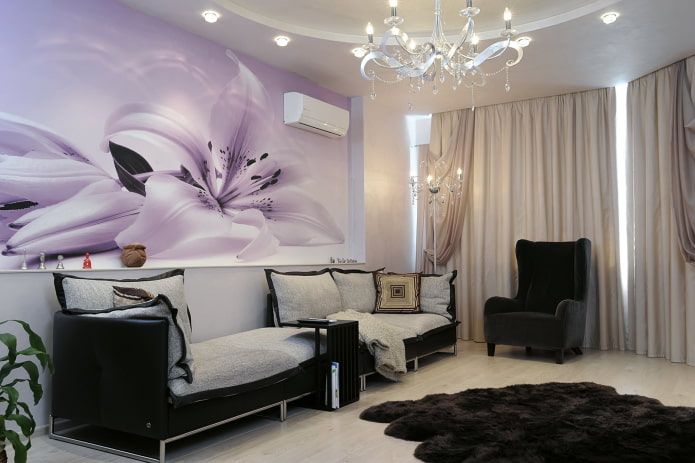

The photo shows a combination of two types of wallpaper in the living room.
Each type of wallpaper has its own advantages and disadvantages. Let’s consider them in more detail.
Paper
Classic wallpaper is made on a paper base. They are not moisture-resistant – but in the living room, as a rule, this is not required.
Maintenance of such a coating is simple – from time to time they need to be cleaned with a vacuum cleaner. A variety of colors and patterns allows you to choose a suitable design for any interior, be it classic or modern style. Paper can have different textures, colors, be smooth, structured or embossed.
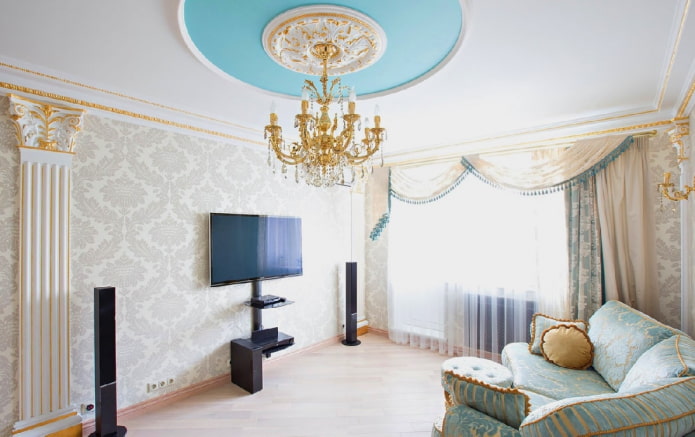
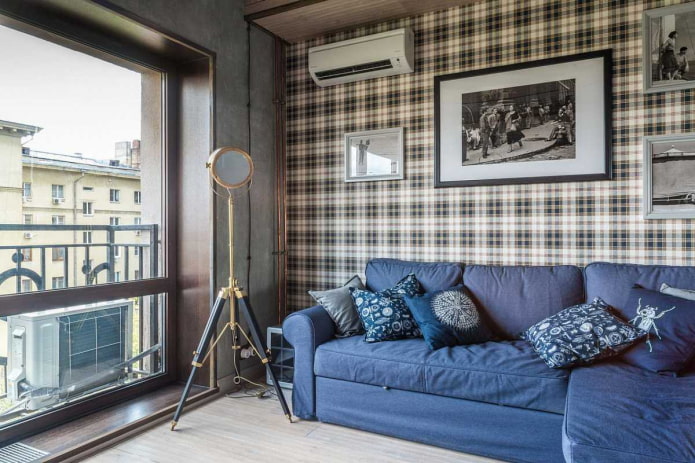
Vinyl
Interesting designs are created using polymer fibers. Vinyl coverings on a paper or non-woven base have a leveling effect and work as an additional heat and sound insulating layer.
Wallpaper designs with a silk-screen printing pattern are suitable for classic living rooms. Silk thread vinyl used for the top layer allows you to create luxurious interiors.
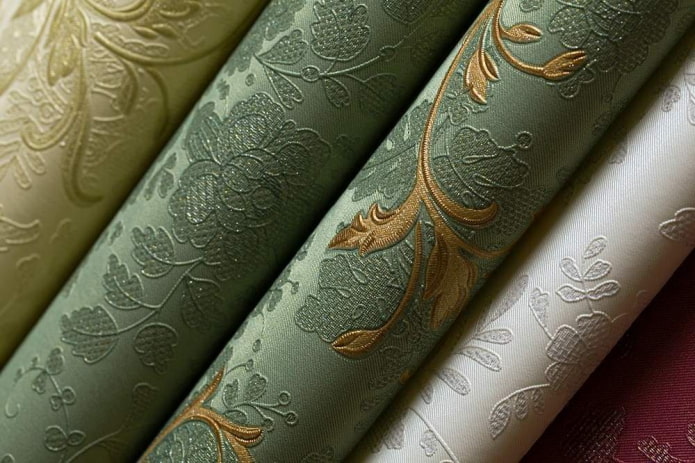
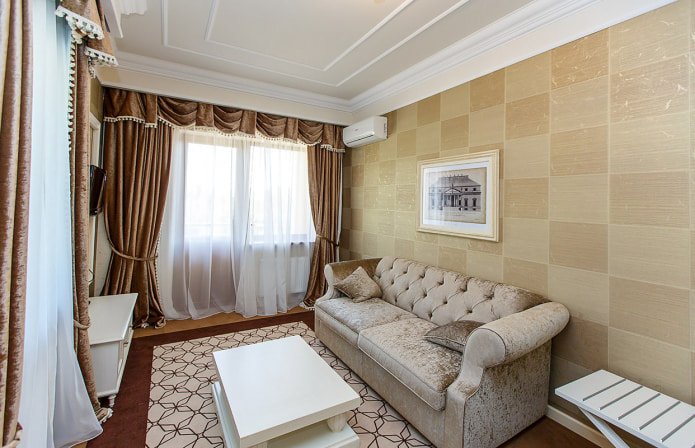
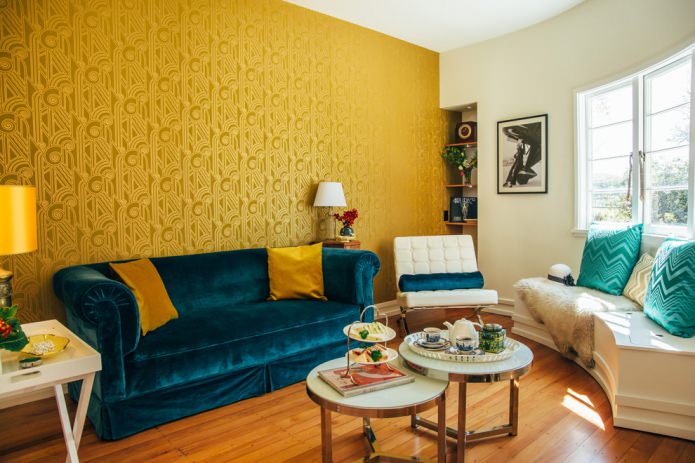
Acrylic
They have a paper base onto which a polymer is applied using a dot method. This gives acrylic models a certain advantage over vinyl models, as it facilitates air exchange.
However, they are less resistant to water and their service life is significantly shorter. A thin base is not able to mask wall defects, and design options are very limited, so this type of coating has not become widespread for finishing living rooms.

Fiberglass
Fiberglass wallpaper has its advantages: it is very durable and strong, “breathes” well, and can be washed. However, the disadvantages are also obvious: there is only one finishing option – painting, and you can repaint it only a limited number of times, since the paint gradually hides the relief, worsening the decorative properties. The high cost and difficulty of dismantling also do not contribute to the popularity of this covering.
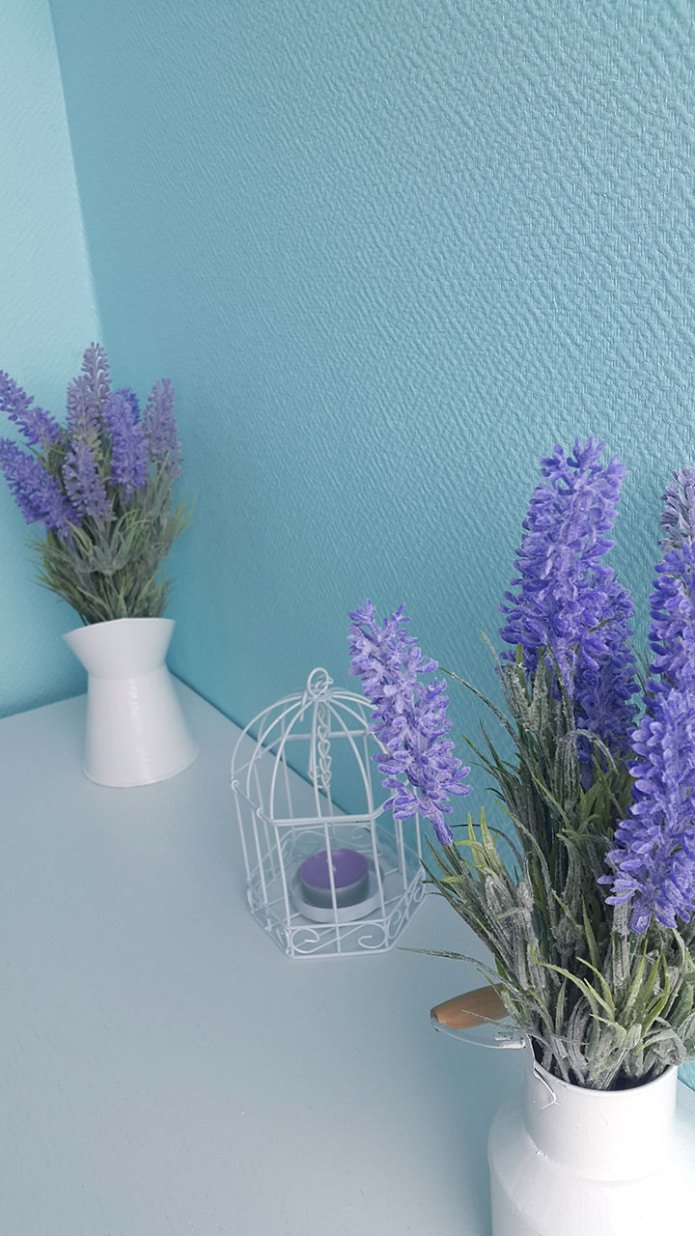


Metallic
They can advantageously emphasize the design in the Art Deco style, and models with discreet prints are suitable for modern living rooms. Some options are also suitable for classic styles. The base is non-woven fabric, on top of which a thin layer of aluminum foil is applied.
Embossing or a pattern is applied to the foil, usually under a metal: gold, silver, platinum, bronze. The foil has heat-insulating properties, is resistant to moisture, does not fade, and is not subject to wear over a long period of time.
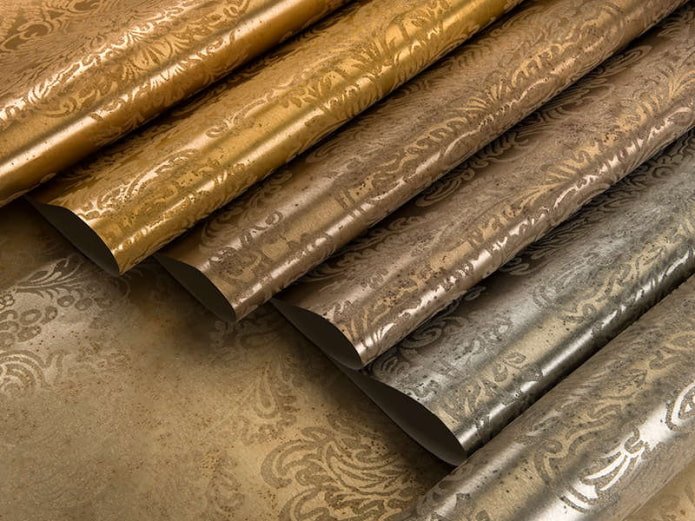
Liquid
This finishing material contains cellulose as a base, silk fibers, dyes, decorative components (mica, mother-of-pearl, various minerals in crumbs, glitter, gold and silver threads), as well as substances that protect against mold, decay, and binders. In appearance, they resemble plaster, are supplied dry and diluted with water before use.
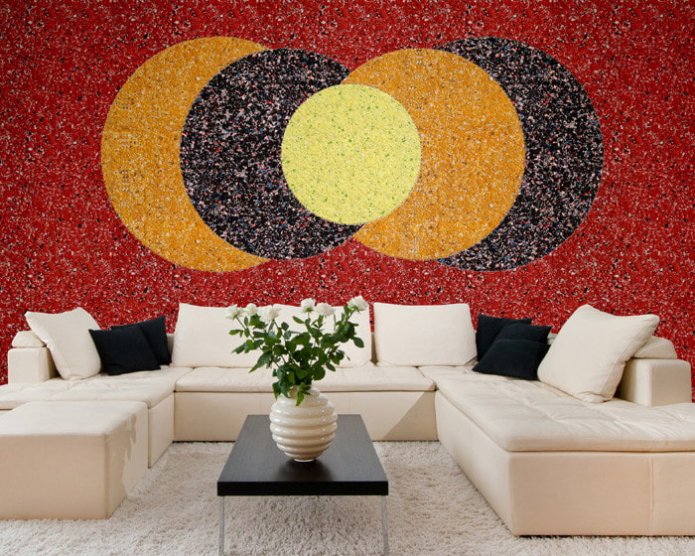

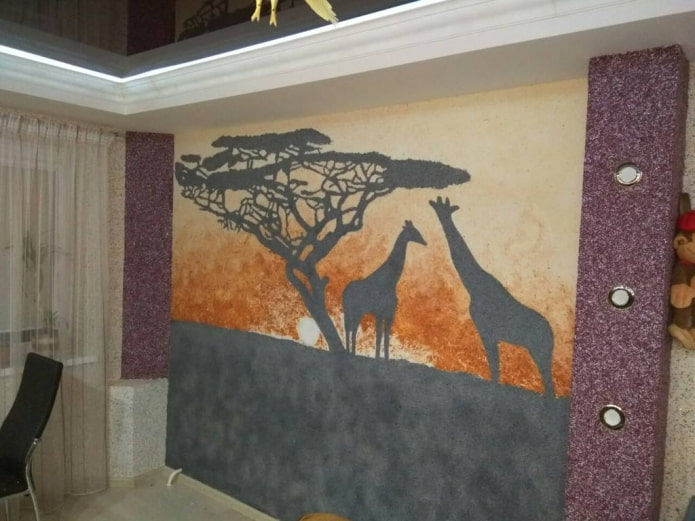
Natural
Wallpaper can be made of fabric, cork, bamboo fibers or jute, leather plates. Natural also refers to coverings made of natural fibers applied to non-woven fabric. Real dry plants can be woven into these coverings. The original interior design is not the only advantage of this covering. Natural fabrics have heat-insulating properties, do not fade, and are environmentally friendly.
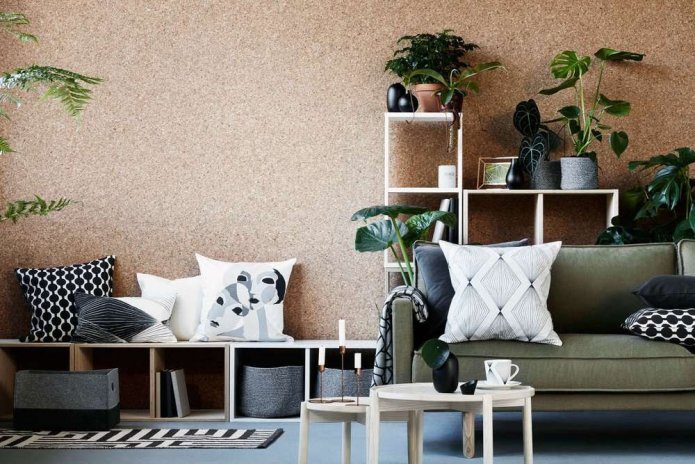
What color is right?
With the help of wallpaper color and its saturation, you can create various interior effects:
- highlight functional areas,
- “raise” low ceilings,
- “move apart” walls,
- “brighten” the room or, on the contrary, create an intimate atmosphere.
This technique is widely used in interior design, so you can also easily correct the proportions of a small living room.
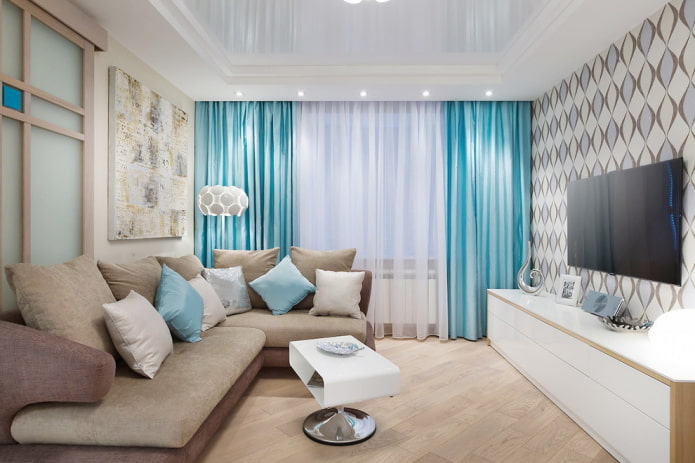
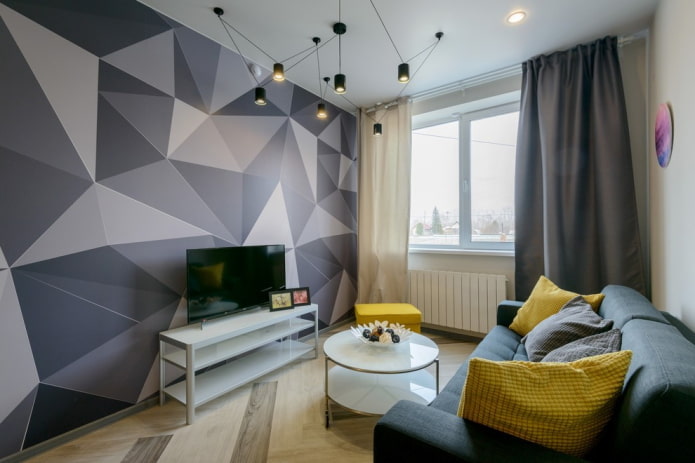
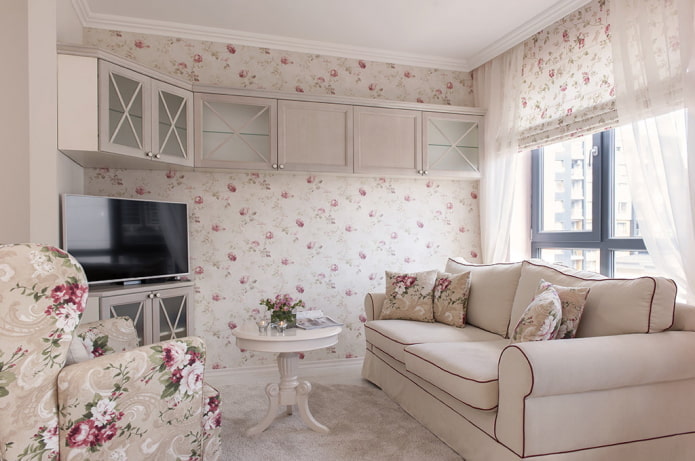
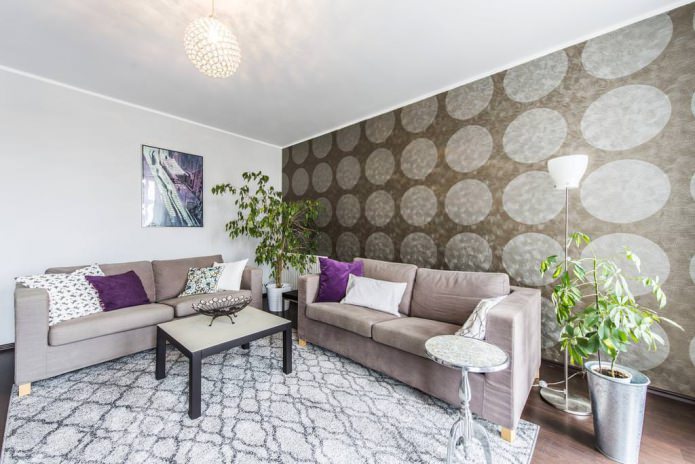
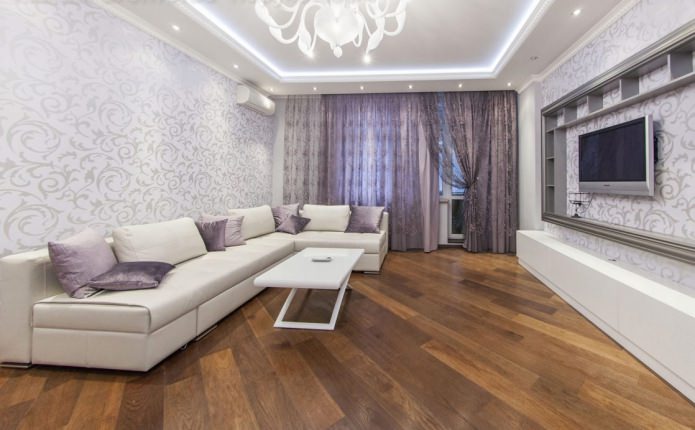
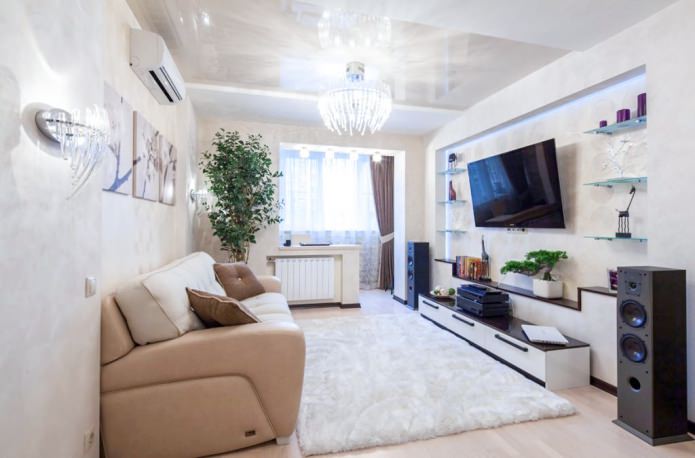
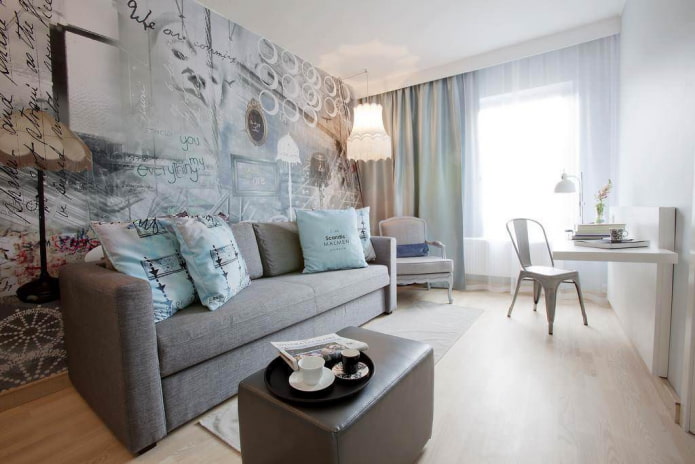

How to use light colors?
They will give the room more space and add light, especially in cases where the windows face the north side. Gradual, gradient darkening, directed from top to bottom, will create the illusion of high ceilings.
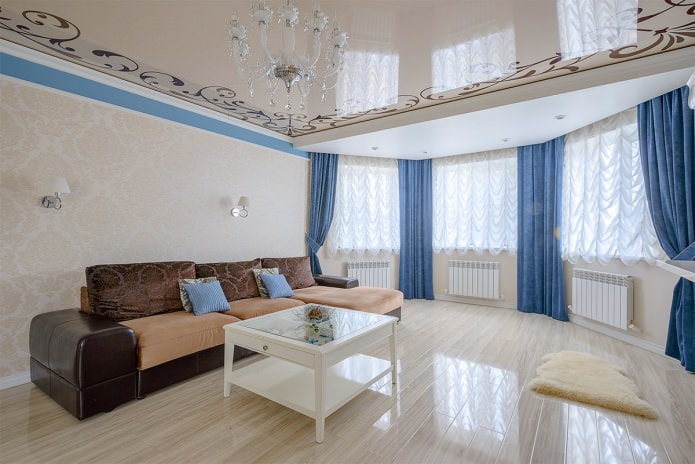
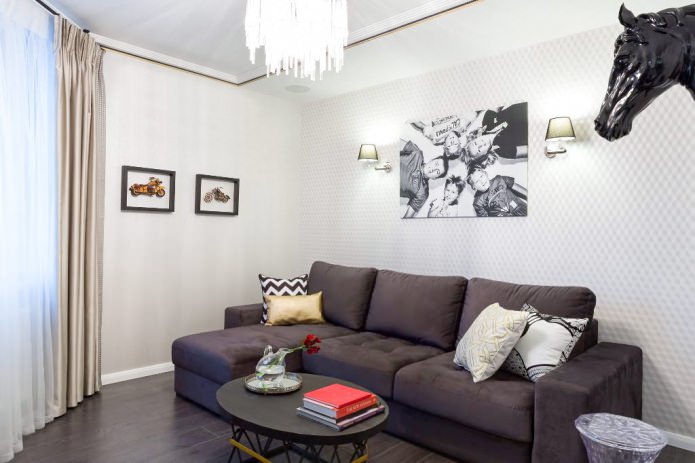
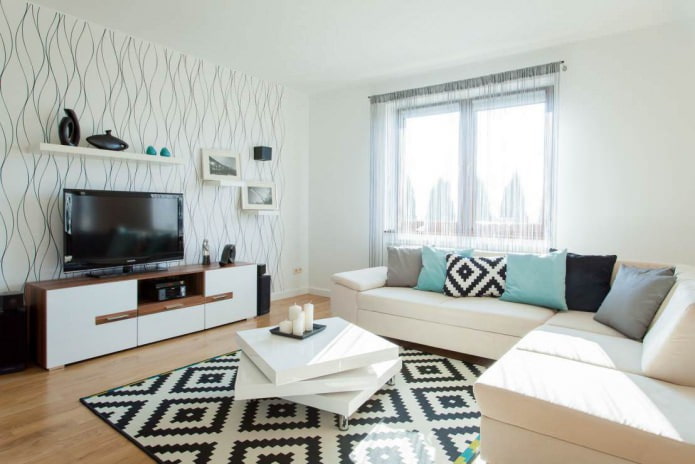
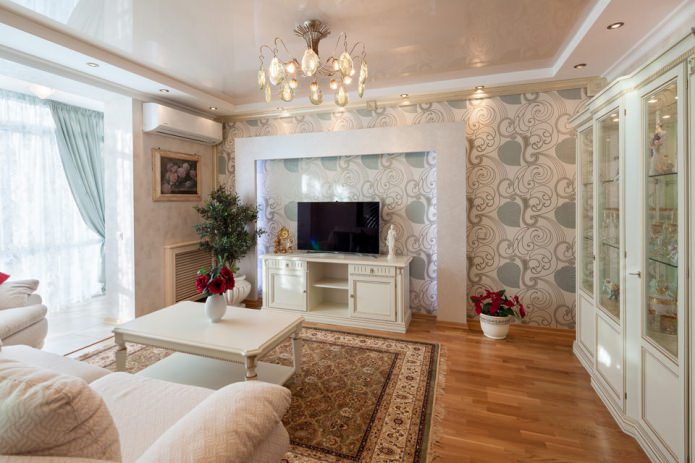
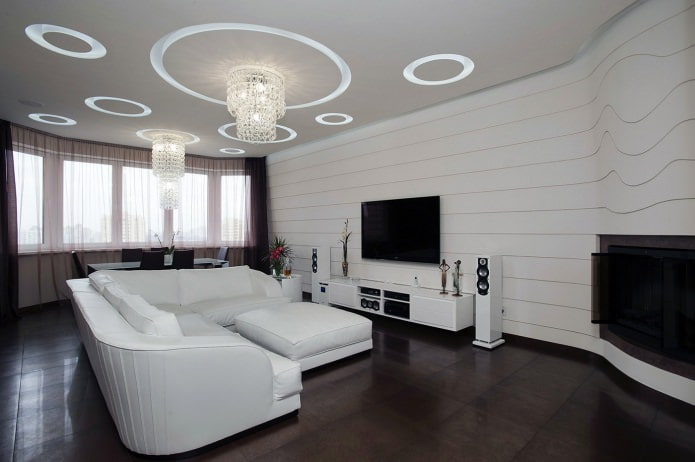

A classic version of living room design is a combined wallpaper finish. You can create an accent wall behind the TV or near the sofa with an original print, and decorate the rest of the wall with plain light wallpaper.

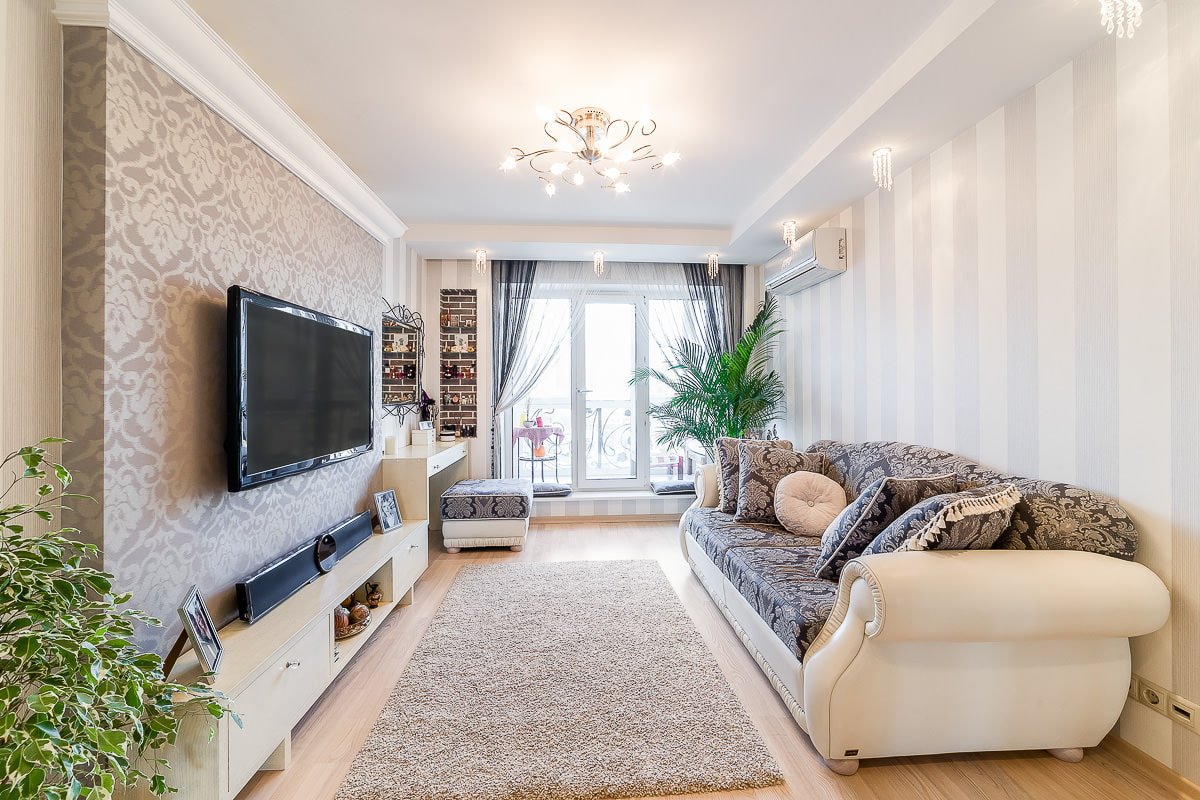

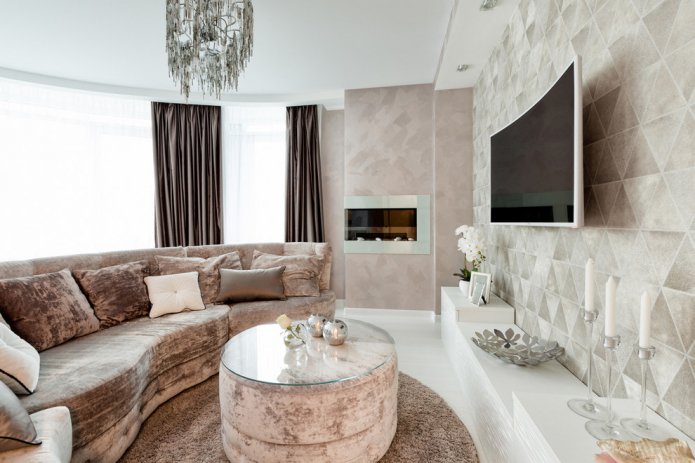

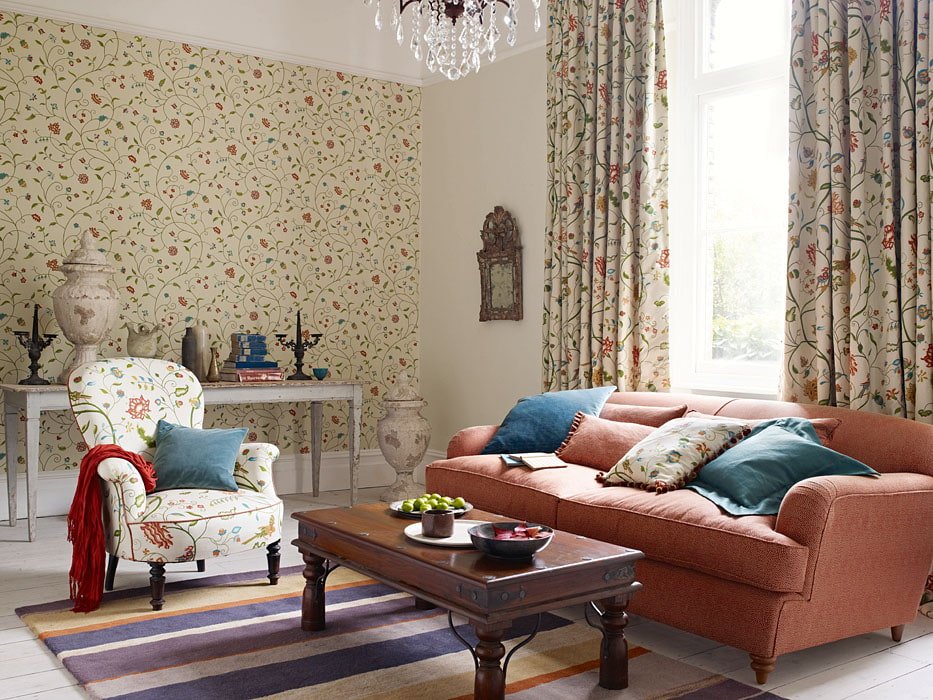

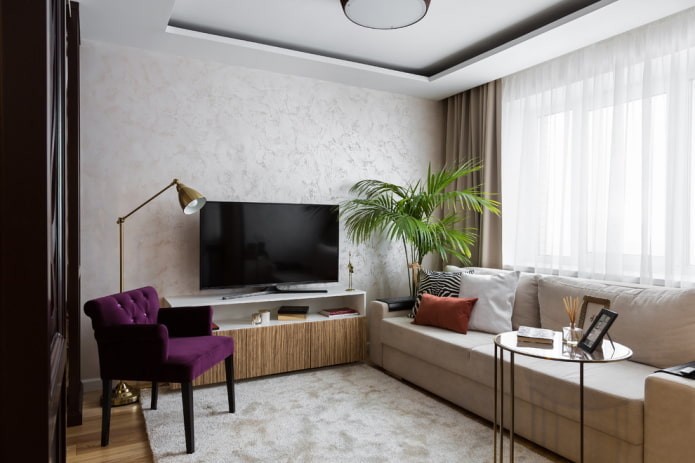
How to decorate a living room in dark tones?
They are often used to highlight a particular part of the wall – for example, in the fireplace area. The color scheme is selected in accordance with the chosen style of living room design and the personal tastes of the customer, but there are several general rules that must be followed to create a comfortable interior:
- Too bright and “acidic” tones should be avoided, especially in large areas;
- In rooms with insufficient natural light, do not wallpaper the walls with dark, saturated tones;
- In small living rooms, it is better to use one tone for the walls, and it should be light.
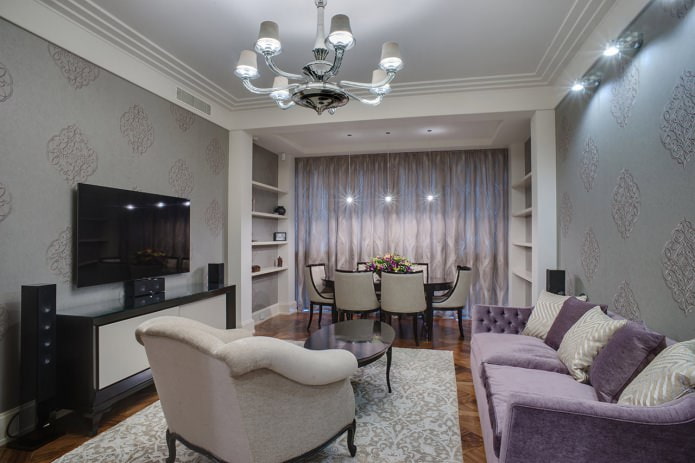
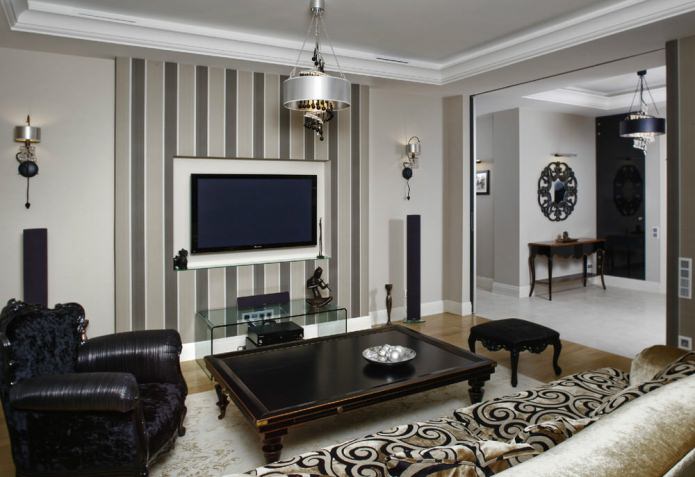
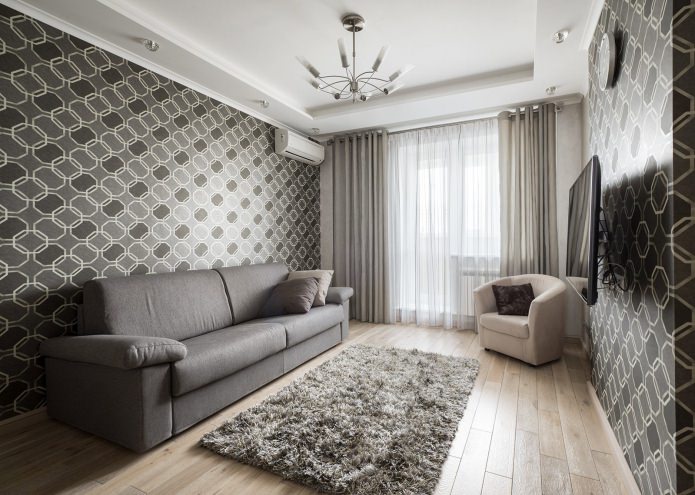
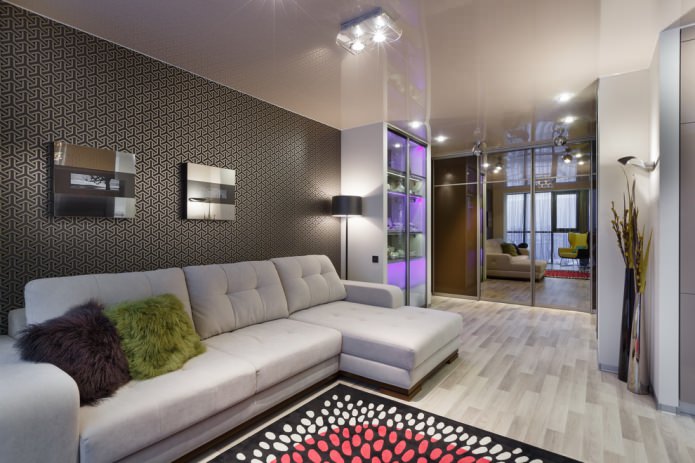
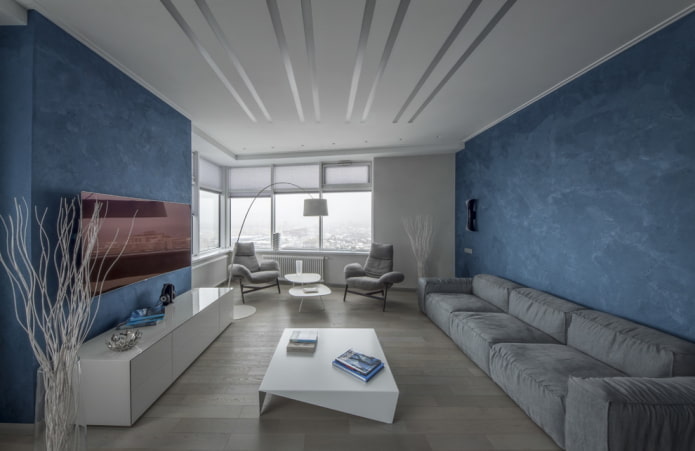
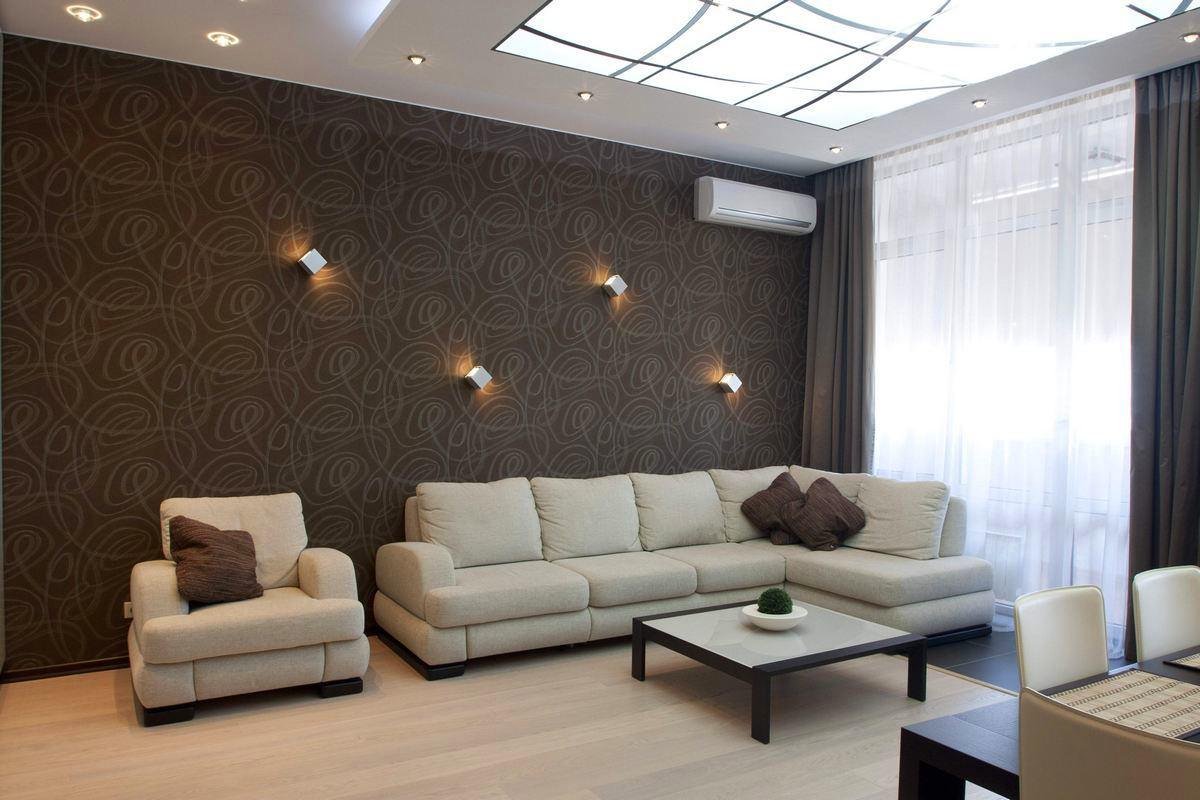

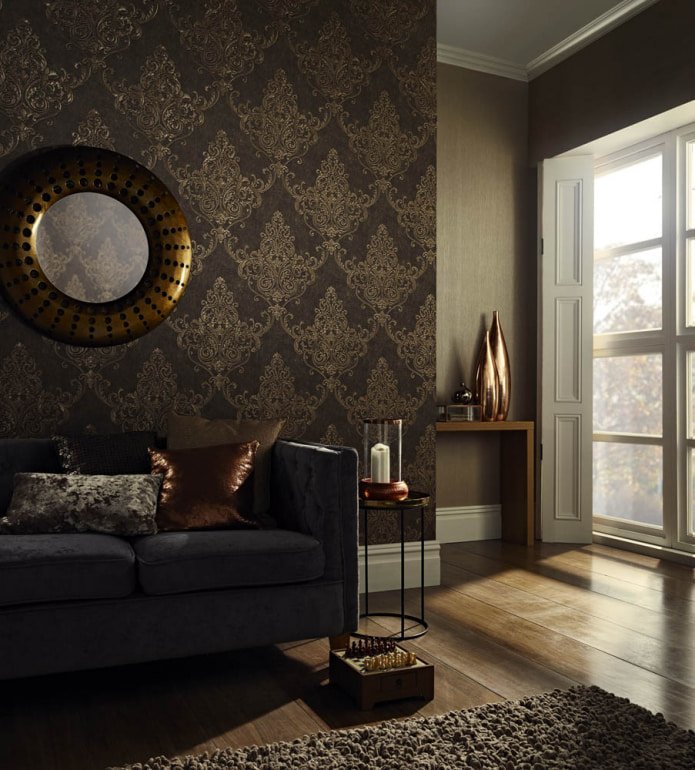
How to combine wallpaper in 2024?
Often, the living room can have an irregular shape or too low ceilings. A very large room is also not always good: a person will not feel too comfortable in it. These and some other shortcomings can be corrected by combining wall coverings of different colors, patterns and textures.
To correct the geometry of the room
By highlighting one of the walls with photo wallpaper or wallpaper of a contrasting tone, you can partially correct the geometry of the space. Using combined wallpaper in the living room in the vertical direction visually “raises” the ceilings, in the horizontal direction — “expands” the walls.
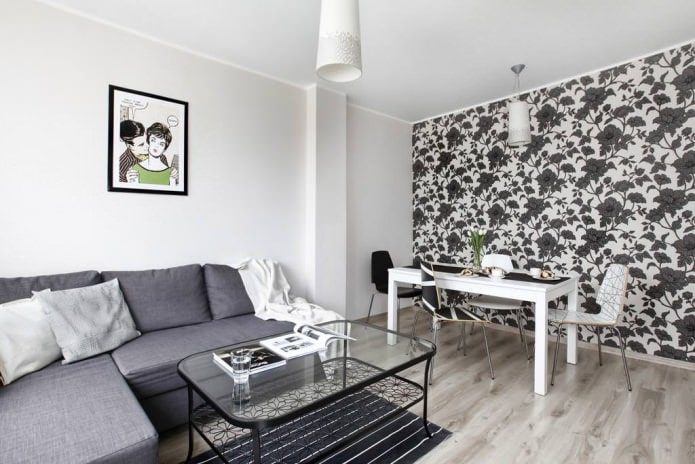
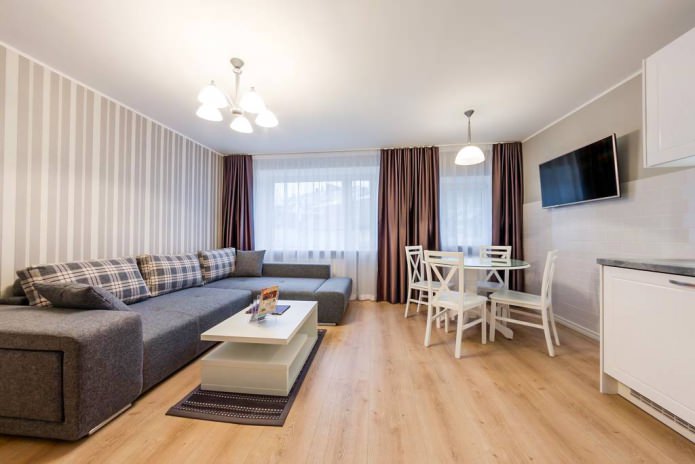

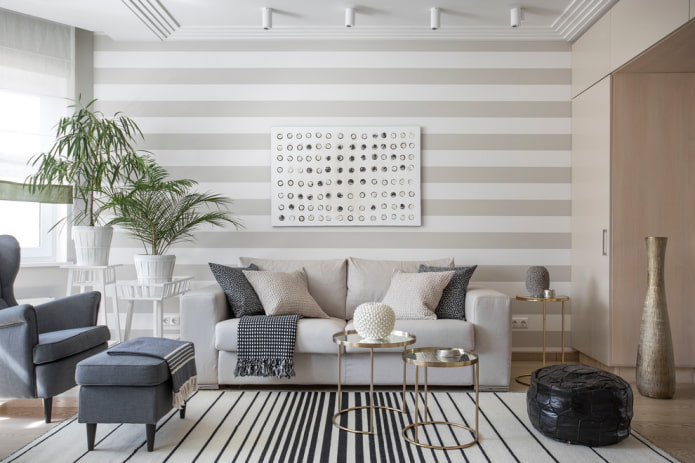
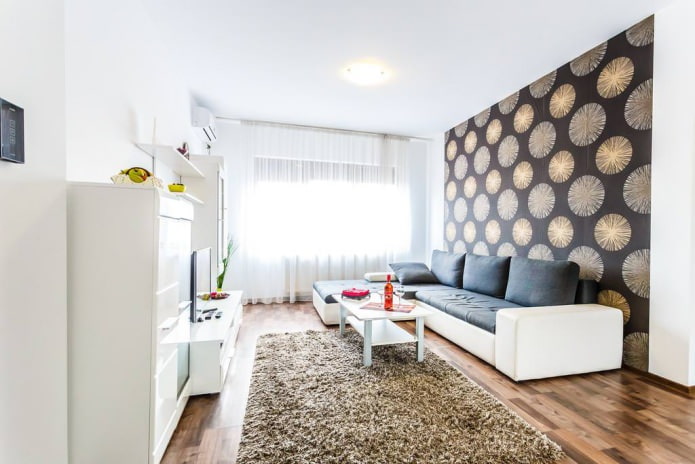
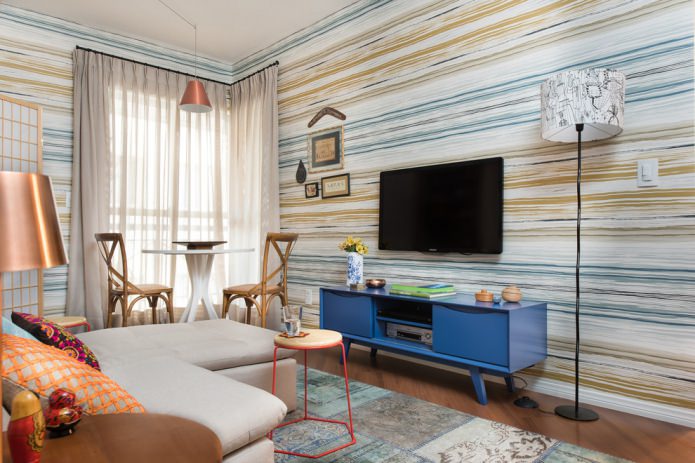
Zonal allocation
Various combinations of colors and wallpaper patterns in the living room are used to divide the living room into functional zones – a fireplace, a reading area, a TV viewing area, and others. The same technique helps to zone the space in open-plan layouts.
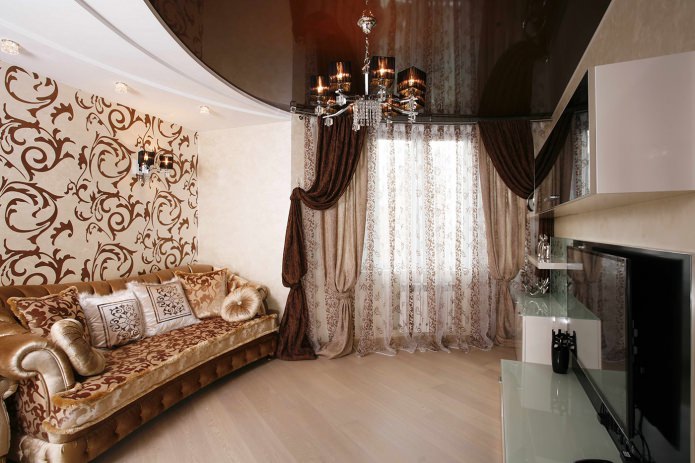
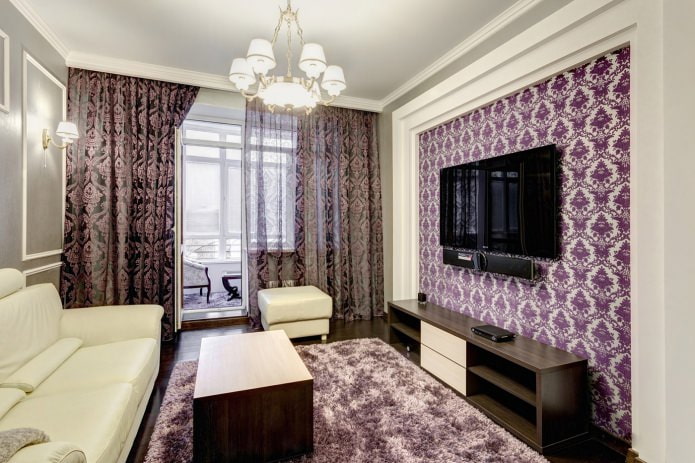
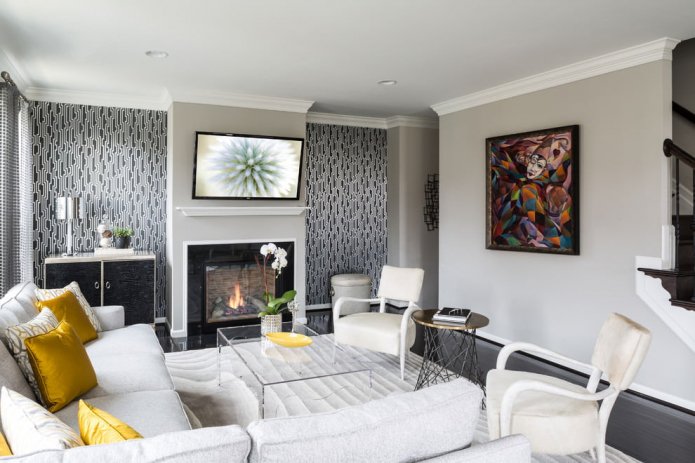
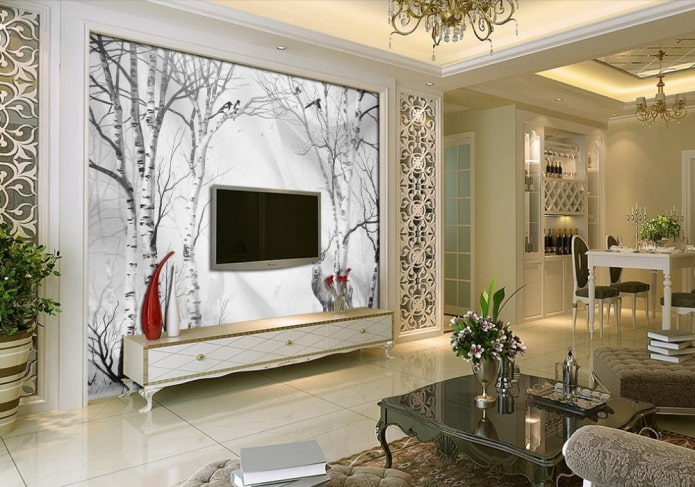
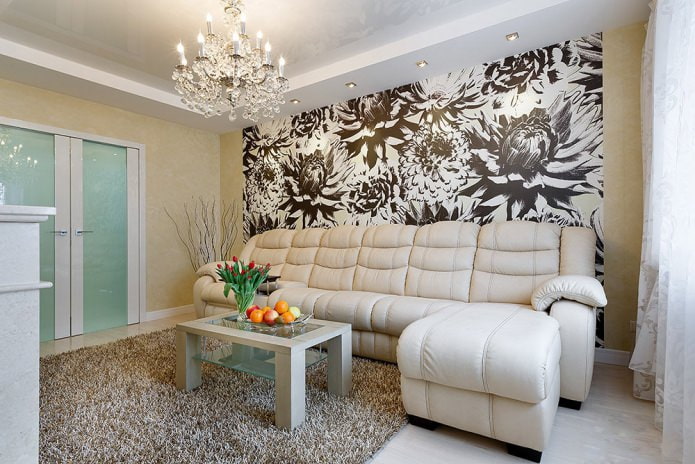
As a decorative element
Two-color canvases can be used in the interior to create an original wall decor with a pattern or design. For example, all the walls are light, and a few areas are dark with a pattern, they can be framed using a wooden, metal or plastic strip.
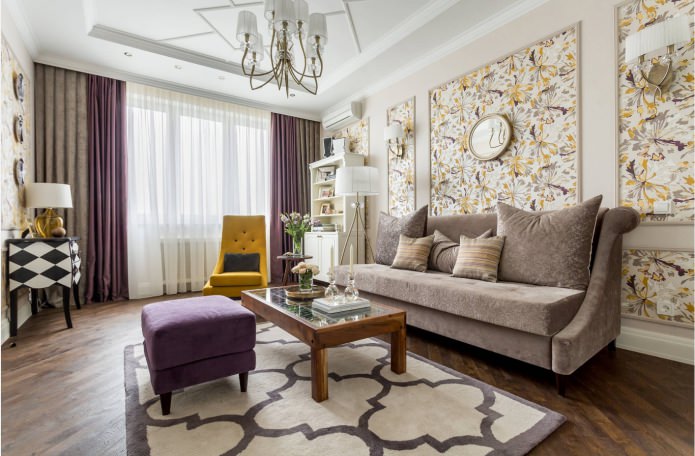
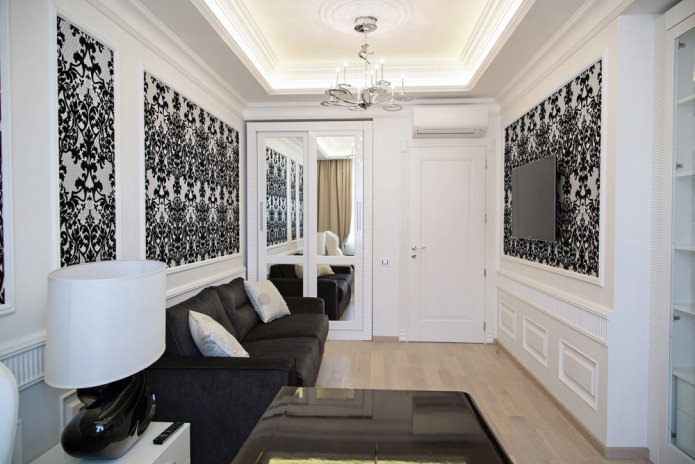
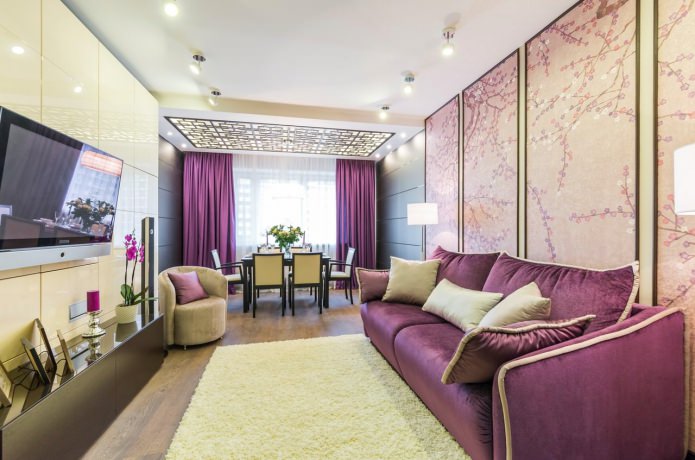
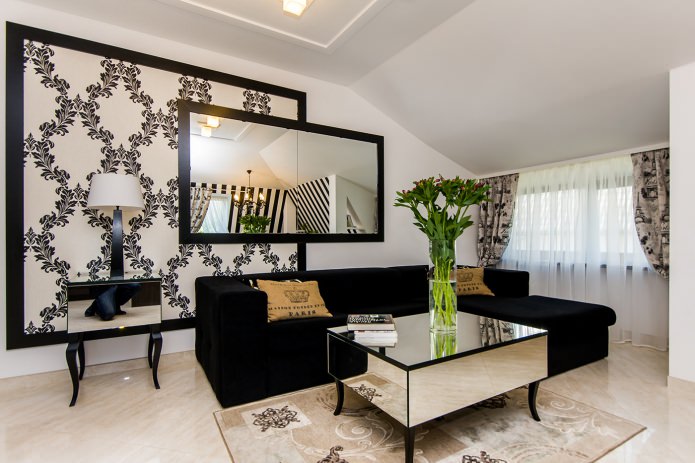
Beautiful examples for inspiration
The photos below show examples of using modern wallpaper in the living room interior.
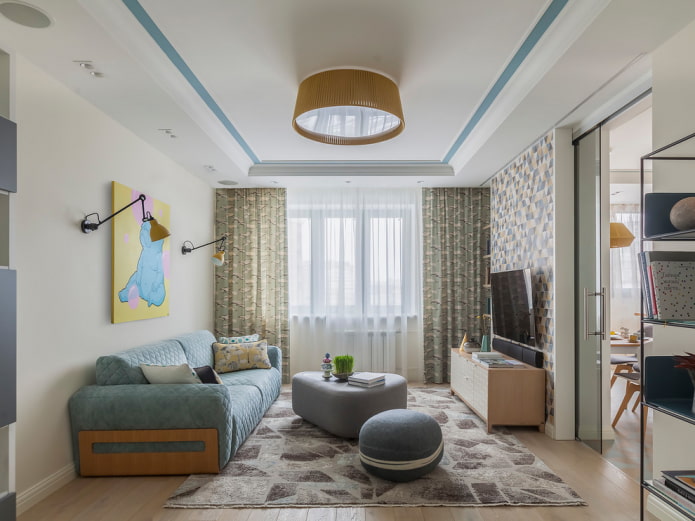
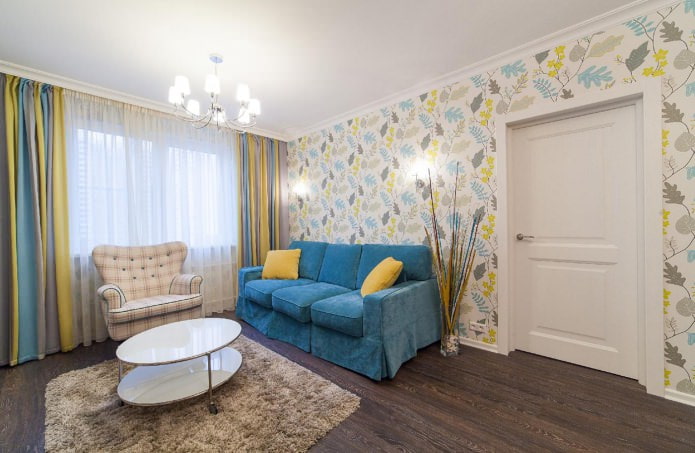

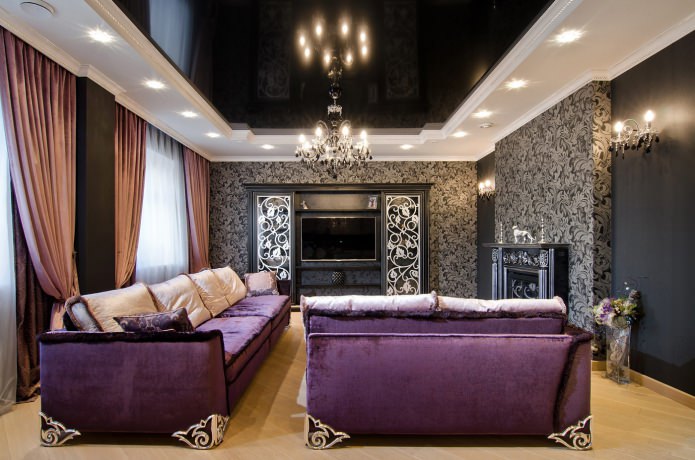
Photo 1. Gray wallpaper in the interior highlights the fireplace and TV areas.
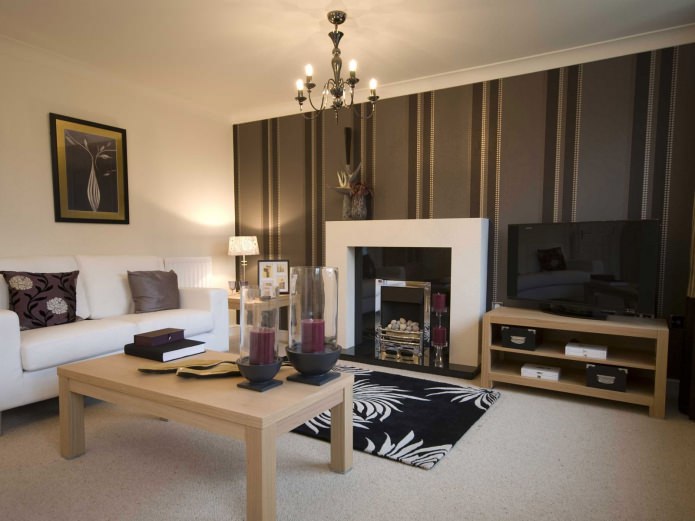
Photo 2. Two-color canvases add graphic quality to the interior and divide it into functional areas: fireplace and sofa.
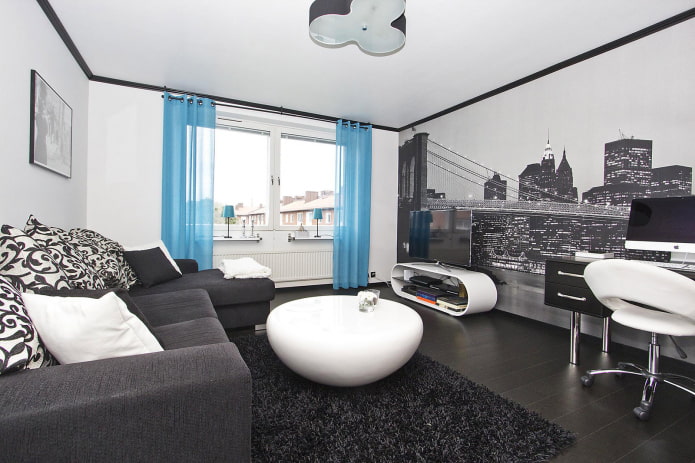
Photo 3. White glass wallpaper in the living room in combination with dark photo wallpaper — furniture and flooring — give the interior a graphic look.
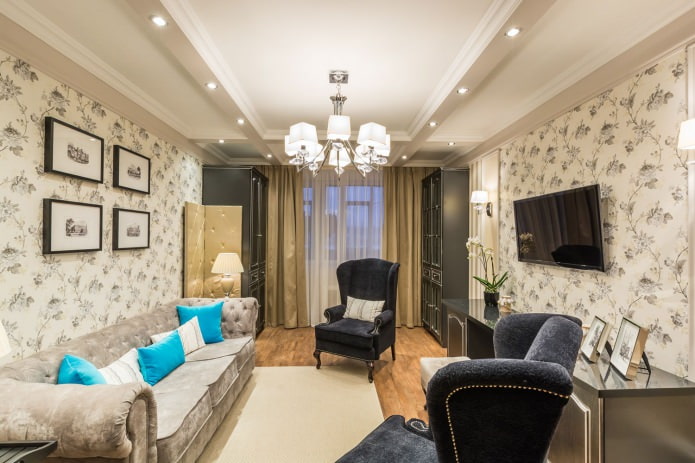
Photo 4. Classic interior with light wallpaper with a floral pattern.

Photo 5. Decorating an accent wall with brick-effect wallpaper highlights the sofa area in a modern living room design.

Photo 6. The combination of light-colored wallpaper with an unobtrusive pattern and dark furniture gives the living room expressiveness.
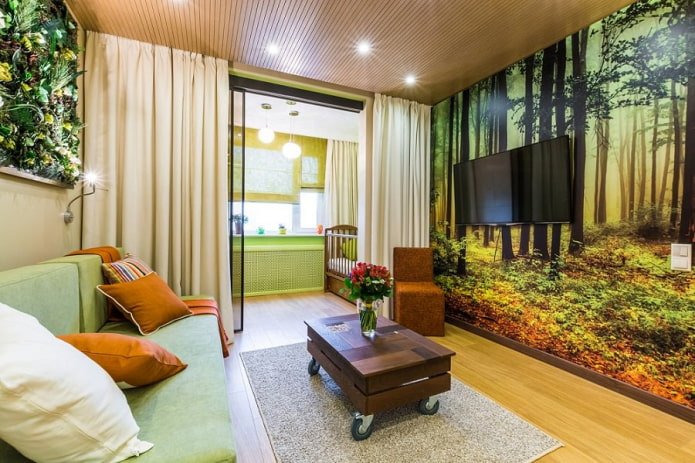
Photo 7. An interesting idea for decorating a wall in the living room with wallpaper with a photo print in eco style.

Photo 8. Beautiful photo wallpaper in pink tones creates a romantic interior.
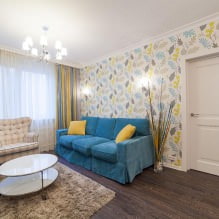

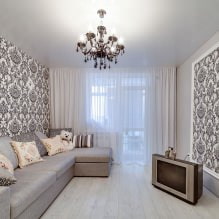
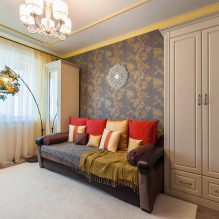
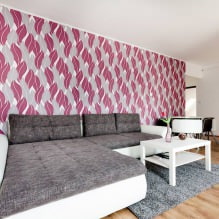
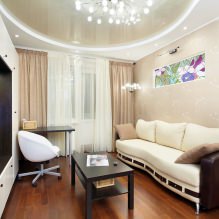
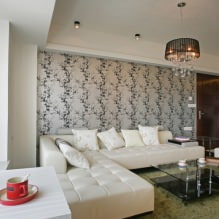
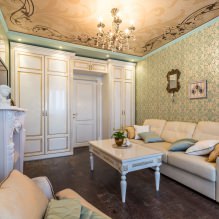
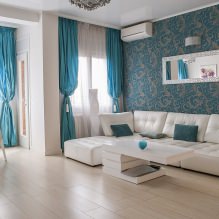
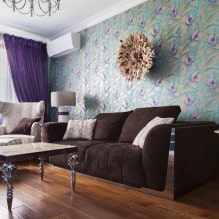
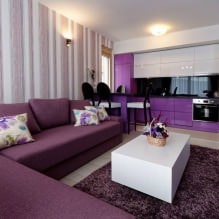
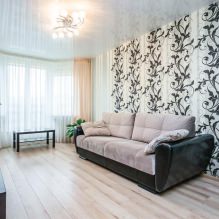
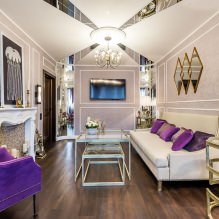
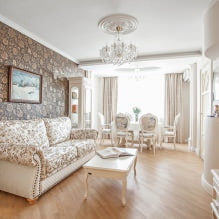
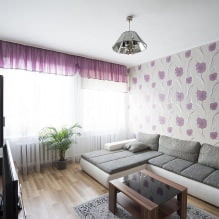
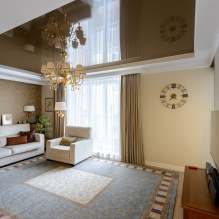
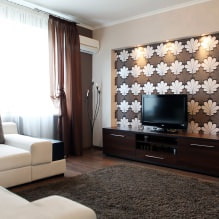
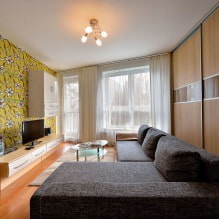
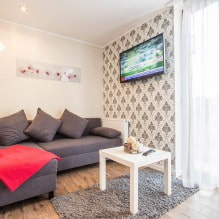
Now reading:
- Various curtains: images of roller blinds, Roman blinds, blinds and Austrian blinds.
- White children’s room: more than 40 photos and ideas for a stylish interior.
- How to effectively wash the floor: by hand or with a mop? – 8 arguments for and against.
- inspiring examples of wallpaper and paint combinations for a unique interior.
- Kitchen Backsplash Selection Guide: Materials, Advantages, and Disadvantages (31 Photos)